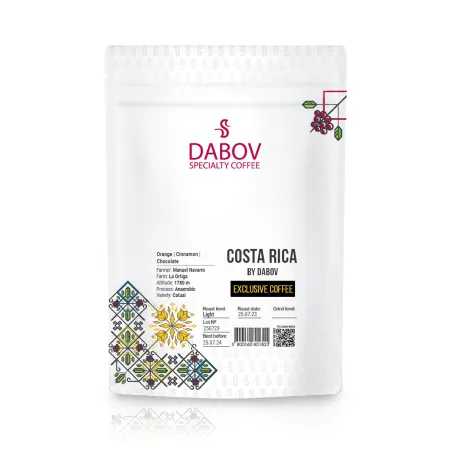The Impact of Deforestation on Coffee Production
Coffee is not just a beverage; it's a vital global commodity that fuels economies and cultures. However, the alarming rate of deforestation poses a substantial threat to coffee production worldwide. As forests are cleared for agriculture and urbanization, coffee crops suffer from soil degradation, climate extremes, and loss of biodiversity. This article delves into how deforestation disrupts coffee cultivation, highlighting the urgency for sustainable farming practices. We will explore the environmental impacts, case studies from major coffee-producing countries, and innovative approaches that promote eco-friendly coffee production. By understanding these interconnected issues, consumers can make informed choices that advocate for both their morning cup and the planet's health.
Introduction
Coffee, a beloved beverage consumed by millions worldwide, stands as a cornerstone of global trade and cultural exchange. As the second most traded commodity after oil, coffee plays a pivotal role in the economies of numerous countries, particularly in the developing world. The coffee industry employs over 25 million people globally, with approximately 12.5 million farms, predominantly small-scale operations, dedicated to its cultivation. However, this vital industry faces a significant threat: deforestation.
The coffee belt, stretching across equatorial regions between the Tropics of Cancer and Capricorn, encompasses some of the world's most biodiverse areas. Unfortunately, these regions are also experiencing rapid deforestation. This article delves deep into the intricate relationship between deforestation and coffee production, exploring the multifaceted impacts and the urgent need for sustainable practices to safeguard both the industry and the environment.
1. Understanding Deforestation
1.1 Definition of Deforestation
Deforestation refers to the permanent removal of forests and tree cover, typically for alternative land uses. According to the Food and Agriculture Organization (FAO), between 2015 and 2020, the rate of deforestation was estimated at 10 million hectares per year. In coffee-producing regions, the situation is particularly dire. For instance, in Brazil, the world's largest coffee producer, the Atlantic Forest – home to many coffee plantations – has been reduced to less than 15% of its original coverage.
The impact of deforestation extends far beyond the immediate loss of tree cover. It disrupts entire ecosystems, alters local and global climate patterns, and poses significant challenges to biodiversity and human livelihoods. In the context of coffee production, deforestation threatens the very foundation of an industry that has traditionally relied on specific environmental conditions for optimal growth.
1.2 Causes of Deforestation
While coffee cultivation itself can contribute to deforestation, it's essential to understand the broader context. Several interrelated factors drive deforestation in coffee-producing regions:
- Agricultural Expansion: As global demand for agricultural products increases, forests are cleared to make way for crops and pastures. Coffee, particularly sun-grown varieties, has played a role in this expansion.
- Logging: Both legal and illegal logging operations continue to deplete forest resources, often paving the way for agricultural conversion.
- Urbanization: Growing populations and urban sprawl encroach upon forested areas, particularly in developing countries where many coffee-growing regions are located.
- Infrastructure Development: The construction of roads, dams, and other infrastructure projects often leads to forest fragmentation and increased access to previously remote areas.
- Climate Change: Changing weather patterns and increased frequency of extreme events can lead to forest degradation and loss, creating a vicious cycle as deforestation further exacerbates climate change.
In the specific context of coffee production, the shift from traditional shade-grown coffee to sun-grown varieties has been a significant driver of deforestation. Sun-grown coffee, while offering higher short-term yields, requires the clearing of forest canopy, leading to a host of environmental issues that ultimately impact coffee production itself.
2. The Direct Impact of Deforestation on Coffee Production
2.1 Soil Degradation and Erosion
One of the most immediate and devastating effects of deforestation on coffee production is soil degradation and erosion. Forests play a crucial role in maintaining soil health through several mechanisms:
- Root Systems: Tree roots help bind soil particles together, preventing erosion and maintaining soil structure.
- Organic Matter: Leaf litter and other organic materials from forests contribute to soil fertility and structure.
- Microclimate Regulation: Forest canopies protect soil from direct sunlight and heavy rainfall, maintaining optimal moisture levels.
When forests are cleared for coffee cultivation, particularly for sun-grown varieties, these protective mechanisms are lost. The exposed soil becomes vulnerable to erosion, especially in the hilly terrain often favored for coffee growing. A study in the coffee-growing regions of Costa Rica found that soil erosion rates in sun-grown coffee plantations were up to three times higher than in shade-grown systems.
The consequences of soil erosion for coffee production are severe and long-lasting:
- Nutrient Loss: Erosion strips away the nutrient-rich topsoil, reducing soil fertility and necessitating increased fertilizer use.
- Water Retention: Degraded soils have lower water-holding capacity, making coffee plants more vulnerable to drought.
- Root Development: Eroded soils provide a poor substrate for root growth, affecting plant health and productivity.
Over time, these factors lead to declining yields and coffee quality, threatening the sustainability of coffee farming in affected areas.
2.2 Alterations in Climate and Weather Patterns
Deforestation significantly impacts local and regional climate patterns, with direct consequences for coffee production. Forests play a vital role in regulating temperature and precipitation through several mechanisms:
- Evapotranspiration: Trees release water vapor into the atmosphere, contributing to cloud formation and local rainfall patterns.
- Albedo Effect: Forest canopies reflect less sunlight than bare ground, helping to moderate temperatures.
- Wind Protection: Forests act as windbreaks, protecting crops from damaging winds.
The removal of forest cover disrupts these regulatory functions, leading to:
- Increased Temperature Fluctuations: Deforested areas experience more extreme temperature swings, potentially exposing coffee plants to heat stress or frost damage.
- Altered Rainfall Patterns: Changes in local water cycles can lead to unpredictable rainfall, increasing the risk of both drought and flooding.
- Microclimate Destabilization: The loss of forest-regulated microclimates can affect coffee flowering and fruit development cycles.
A study in Ethiopia, the birthplace of Arabica coffee, found that deforestation could lead to the loss of up to 60% of suitable coffee-growing areas by the end of the century due to climate change exacerbated by forest loss.
2.3 Loss of Biodiversity
Deforestation's impact on biodiversity has profound implications for coffee production. Coffee agroecosystems, particularly traditional shade-grown systems, can support high levels of biodiversity. This biodiversity provides crucial ecosystem services:
- Pollination: Many coffee varieties rely on insect pollination for optimal yield and quality.
- Pest Control: Diverse ecosystems support natural predators that help control coffee pests.
- Soil Health: Soil biodiversity, including microorganisms and invertebrates, is essential for nutrient cycling and soil structure.
The loss of forest habitats and the transition to sun-grown coffee systems disrupt these ecological relationships. Consequences include:
- Reduced Pollination Services: A study in Costa Rica found that forest fragments near coffee plantations increased coffee yield by 20% due to enhanced pollination services.
- Increased Pest Pressure: The loss of natural pest control mechanisms can lead to outbreaks of coffee pests like the coffee berry borer.
- Soil Degradation: Reduced soil biodiversity affects nutrient availability and soil structure, impacting coffee plant health and productivity.
Moreover, the loss of genetic diversity in wild coffee populations due to deforestation threatens the long-term resilience of coffee crops. Wild coffee varieties represent a crucial genetic resource for developing disease-resistant and climate-resilient coffee cultivars.
3. The Broader Environmental Impact of Coffee Cultivation
3.1 Water Resources and Quality
Deforestation associated with coffee cultivation has significant implications for water resources, a critical factor in coffee production. Forests play a vital role in the water cycle:
- Water Filtration: Forest soils act as natural filters, improving water quality.
- Water Storage: Forests help recharge groundwater and maintain stream flows during dry periods.
- Flood Mitigation: Forest cover reduces runoff and helps prevent flooding during heavy rainfall events.
The loss of forest cover in coffee-growing regions impacts water resources in several ways:
- Reduced Water Availability: Deforestation can lead to decreased rainfall and lower groundwater levels, affecting water availability for coffee irrigation.
- Water Quality Degradation: Increased erosion and runoff from deforested areas can lead to sedimentation and pollution of water sources.
- Altered Hydrological Cycles: Changes in forest cover can disrupt seasonal water flows, affecting coffee plant phenology and irrigation planning.
A study in the coffee-growing regions of Vietnam found that deforestation led to a 20-30% reduction in dry-season stream flows, significantly impacting water availability for coffee production.
3.2 Carbon Emissions and Climate Change
The relationship between deforestation, carbon emissions, and climate change forms a critical feedback loop that threatens coffee production globally. Forests are crucial carbon sinks, storing vast amounts of carbon in their biomass and soils. When forests are cleared, this stored carbon is released into the atmosphere, contributing to global warming.
The coffee industry's contribution to this cycle is significant:
- Direct Emissions: Deforestation for coffee cultivation releases stored carbon.
- Indirect Emissions: Sun-grown coffee systems often require more inputs (fertilizers, pesticides) with associated carbon footprints.
- Reduced Carbon Sequestration: The loss of forest cover reduces the landscape's capacity to absorb carbon dioxide.
The consequences of these emissions extend beyond local impacts:
- Global Climate Change: Increased atmospheric CO2 contributes to rising global temperatures, altering suitable growing regions for coffee.
- Extreme Weather Events: Climate change is associated with more frequent and severe weather events, posing risks to coffee crops.
- Long-term Sustainability: The changing climate threatens the viability of coffee production in many traditional growing areas.
A study published in the journal "Climatic Change" projected that climate change could reduce the global area suitable for coffee production by up to 50% by 2050, with significant implications for the industry and the millions who depend on it.
4. The Intersection of Deforestation and Sustainable Coffee Farming
4.1 What is Sustainable Coffee Farming?
Sustainable coffee farming represents a holistic approach to coffee production that balances economic viability with environmental stewardship and social responsibility. Key principles include:
- Environmental Conservation: Protecting and enhancing natural ecosystems within and around coffee farms.
- Soil Health Management: Implementing practices that maintain and improve soil fertility and structure.
- Water Conservation: Efficient use of water resources and protection of water quality.
- Biodiversity Preservation: Maintaining diverse agroecosystems that support both coffee production and local flora and fauna.
- Climate Resilience: Adopting practices that mitigate and adapt to climate change impacts.
- Social Equity: Ensuring fair labor practices and supporting local communities.
Sustainable coffee farming practices often draw inspiration from traditional methods while incorporating modern scientific understanding and technologies.
4.2 Deforestation Prevention Strategies
Several strategies have emerged to prevent deforestation in coffee-growing regions while maintaining or enhancing productivity:
- Agroforestry Systems: These systems integrate trees and shrubs into coffee plantations, mimicking natural forest structures. Benefits include:
- Improved soil health and reduced erosion
- Enhanced biodiversity and ecosystem services
- Diversified income streams for farmers (e.g., fruit or timber production)
- Shade-Grown Coffee: A specific form of agroforestry, shade-grown coffee maintains a forest canopy above coffee plants. Advantages include:
- Natural pest control and reduced need for chemical inputs
- Improved coffee quality due to slower maturation
- Enhanced carbon sequestration
- Intensification on Existing Lands: Improving yields on existing coffee farms can reduce pressure to clear new land. Techniques include:
- Improved plant varieties
- Precision agriculture techniques
- Enhanced soil management practices
- Forest Conservation and Restoration: Many sustainable coffee initiatives include programs to protect existing forests and restore degraded areas. These efforts often involve:
- Payment for ecosystem services schemes
- Community-based forest management
- Reforestation projects integrated with coffee production
- Landscape Approaches: These strategies consider coffee production within the broader context of land use planning, aiming to balance agricultural needs with forest conservation at a landscape scale.
4.3 Certification Programs and Consumer Choices
Certification programs play a crucial role in promoting sustainable coffee production and helping consumers make informed choices. Major certification schemes include:
- Rainforest Alliance: Focuses on biodiversity conservation and sustainable livelihoods.
- Fair Trade: Emphasizes fair prices and labor practices, with environmental criteria.
- Organic: Certifies coffee grown without synthetic pesticides or fertilizers.
- Bird Friendly: Developed by the Smithsonian Migratory Bird Center, emphasizing shade-grown practices.
- UTZ: Focuses on sustainable farming practices and better opportunities for farmers.
These certification programs impact deforestation and sustainable practices in several ways:
- Setting Standards: They establish clear criteria for sustainable production, often including specific requirements for forest conservation.
- Market Incentives: Certified coffees often command premium prices, incentivizing farmers to adopt sustainable practices.
- Consumer Awareness: Certifications help educate consumers about the environmental and social impacts of their coffee choices.
- Supply Chain Transparency: Many certification programs require traceability, helping to ensure that coffee is not sourced from deforested areas.
While certification programs have made significant strides, challenges remain. A study in the journal "Conservation Letters" found that while certified farms had higher tree cover than non-certified farms, the impact on deforestation rates was mixed, highlighting the need for continued refinement of certification criteria and implementation.
5. Case Studies of Deforestation and Coffee Production
5.1 Impact in Major Coffee-Producing Countries
Brazil:As the world's largest coffee producer, Brazil has experienced significant deforestation related to coffee cultivation, particularly in the Atlantic Forest region. However, recent years have seen efforts to combat this trend:
- The country has implemented strict regulations on forest clearing, including the Forest Code, which requires landowners to maintain a certain percentage of native vegetation.
- Initiatives like the Atlantic Forest Restoration Pact aim to restore 15 million hectares of forest by 2050, benefiting coffee-growing regions.
- Some areas have seen a transition to more intensive production methods on existing farmland, reducing pressure on forests.
Colombia:Colombia, known for its high-quality Arabica coffee, faces deforestation challenges exacerbated by its complex topography:
- The country has lost over 6 million hectares of forest since 1990, with coffee expansion playing a role in some regions.
- Climate change impacts, including increased pest pressure, have led some farmers to move to higher elevations, potentially encroaching on forest areas.
- The Colombian Coffee Growers Federation has implemented programs promoting sustainable practices, including agroforestry systems.
Vietnam:As the world's second-largest coffee producer and largest Robusta exporter, Vietnam has seen rapid expansion of coffee cultivation:
- The Central Highlands region experienced significant deforestation as coffee production expanded rapidly in the 1990s and 2000s.
- Water scarcity has become a critical issue, with coffee irrigation contributing to groundwater depletion.
- Recent government policies have focused on limiting coffee expansion and promoting more sustainable practices, including intercropping and water-efficient irrigation.
5.2 Successful Sustainable Coffee Farming Initiatives
Several initiatives around the world demonstrate the potential for balancing coffee production with forest conservation:
- Shade-Grown Coffee in El Salvador:The TECAPA-CHINAMECA Coffee Growers Association has successfully implemented shade-grown coffee systems:
- Maintained over 70% shade cover in coffee plantations
- Increased biodiversity, including providing habitat for migratory birds
- Improved coffee quality and farmer incomes through premium pricing
- Agroforestry in Ethiopia:The Kafa Biosphere Reserve project combines coffee production with forest conservation:
- Protects over 760,000 hectares of Afromontane forest
- Promotes traditional shade-grown coffee practices
- Supports community-based forest management and eco-tourism
- Payment for Ecosystem Services in Costa Rica:Costa Rica's PES program incentivizes forest conservation on coffee farms:
- Pays farmers for maintaining forest cover and providing ecosystem services
- Has contributed to increasing forest cover nationally from 21% in 1987 to over 50% today
- Integrates with the country's ambitious climate goals, including carbon neutrality
These case studies demonstrate that with appropriate policies, market incentives, and farmer engagement, it is possible to produce coffee sustainably while protecting and even restoring forest ecosystems.
6. The Future of Coffee Production in the Face of Deforestation
6.1 Innovations in Sustainable Practices
The coffee industry is actively developing innovative solutions to address the challenges posed by deforestation and climate change:
- Climate-Resilient Coffee Varieties:
- Research institutions like World Coffee Research are developing coffee varieties that can withstand higher temperatures and irregular rainfall patterns.
- These new varieties could reduce the need for farmers to move to higher elevations, potentially encroaching on forested areas.
- Precision Agriculture:
- Satellite imagery and drone technology are being used to monitor forest cover and optimize coffee farm management.
- These tools can help identify areas at risk of deforestation and target conservation efforts more effectively.
- Blockchain for Traceability:
- Blockchain technology is being explored to enhance supply chain transparency, ensuring that coffee is not sourced from deforested areas.
- This technology could strengthen certification programs and provide consumers with more detailed information about their coffee's origins.
- Biochar and Carbon Sequestration:
- Research is ongoing into the use of biochar (a form of charcoal) in coffee farming to improve soil health and sequester carbon.
- This practice could turn coffee farms into carbon sinks, offsetting emissions from the industry.
- Vertical Farming:
- While still in early stages, experiments with growing coffee in controlled environments could reduce pressure on land in traditional growing regions.
- This technology might be particularly relevant for areas where climate change threatens the viability of outdoor cultivation.
6.2 Role of Consumers and Global Community
Consumers and the broader global community play a crucial role in shaping the future of sustainable coffee production:
- Informed Purchasing Decisions:
- Consumers can support sustainable practices by choosing certified coffees and asking retailers about their sourcing policies.
- The growing trend of "direct trade" allows consumers to connect more closely with coffee producers and understand their practices.
- Advocacy and Policy Support:
- Public pressure can encourage governments and companies to adopt stronger anti-deforestation policies.
- Supporting international agreements like the Paris Climate Accord can help address the root causes of deforestation.
- Investment in Sustainable Development:
- Impact investing and crowd-funding platforms are providing new ways for individuals to support sustainable coffee projects directly.
- These investments can help smallholder farmers transition to more sustainable practices.
- Education and Awareness:
- Continued efforts to educate consumers about the environmental impacts of coffee production can drive demand for sustainable options.
- Social media and digital platforms offer new opportunities for sharing information and building communities around sustainable coffee.
- Supporting Research and Innovation:
- Public and private funding for research into sustainable coffee production is crucial for developing new solutions.
- Citizen science projects can engage coffee enthusiasts in monitoring and supporting biodiversity in coffee-growing regions.
Conclusion
The impact of deforestation on coffee production is a complex and pressing issue that threatens the long-term sustainability of one of the world's most beloved beverages. From soil degradation and altered microclimates to loss of biodiversity and water resources, the consequences of forest loss reverberate through every aspect of coffee cultivation.
However, the growing recognition of these challenges has spurred innovation and collaboration across the coffee industry. Sustainable farming practices, certification programs, and technological advancements offer pathways to a more environmentally friendly future for coffee production. The success of initiatives in countries like Costa Rica, Ethiopia, and El Salvador demonstrates that it is possible to balance coffee cultivation with forest conservation.
As we look to the future, the role of consumers, policymakers, and the global community in supporting sustainable coffee production cannot be overstated. By making informed choices, advocating for stronger environmental protections, and investing in sustainable development, we can help ensure that future generations can continue to enjoy their morning cup of coffee while preserving the vital forest ecosystems upon which we all depend.
The journey towards truly sustainable coffee production in harmony with forest conservation is ongoing. It requires continued research, innovation, and commitment from all stakeholders in the coffee value chain. By addressing the challenge of deforestation, the coffee industry has the opportunity not just to secure its own future, but to become a model for sustainable agriculture in a changing world.




























